
100 Great Translated Children’s Books from Around the World

Image courtesy Elina Braslina.
September is #WorldKidLit Month. This is a month to celebrate, discover, and discuss the state of literature for children and teens in translation.
There are obstacles to getting any of the world’s great kid lit into English: the “finding the next Pippi Longstocking problem,” as The Guardian recently termed it. Unfortunately The Guardian, like most who promote great kid lit in translation, mentions only European books.
This narrowing of the world is an “up and down the pipeline” problem, as Meytal Radzinski said of Women in Translation Month (#WiTMonth). The important and welcome Marsh and Batchelder prizes have, for the most part, celebrated works from a narrow list of languages. The excellent project OutsideInWorld lists only five titles for all ages from the whole continent of Africa. Reviews, according to Maureen White, have focused overwhelmingly on works translated from French and German. And as NorthSouth’s Heather Lennon recently noted, it’s hard for publishers to move ourtside familiar pathways.
This list attempts to showcase some great literature for kids translated into English, stretching wherever possible to go beyond Western Europe. Additional suggests will be warmly received; hopefully we can make a broader-tent list for #WorldKidLit 2017.
0-3
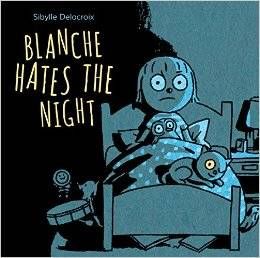
French children’s books have a different attitude from their Anglophone counterparts, and are often told with a bit more bite. In this nighttime tale, Blanche feels the night is so gray, “such a pain!” Instead of harried mommy coming to the rescume, Blanche eventually falls asleep from exhaustion.

A whodunit about a mole who got poo on his head. At first, no one would publish it (you can imagine why), but it went on to become a best-seller. Educational on the shapes of animal feces, for those who demand their children’s books be educational.

A snowman might seem an improbable topic for Iranian literature, but this charming picture book, rendered from a snowman’s point of view, is filled with tiny beautiful touches: a bumblebee riding a bicycle, a cat in a variety of poses, and the ice cream that appears on every page.

A terrific, magical child-pleaser that goes to all sorts of improbable lands to recover a runaway book. Indeed: All of the Polo books are magical. You can make up your own words to fit the pictures or just sit and flip.

Beautiful illustrations of a caterpillar that crawls out of an apple, then retreats into its cocoon. Seasons change. The caterpillar becomes a butterfly and pollinates a flower that grows into an apple.
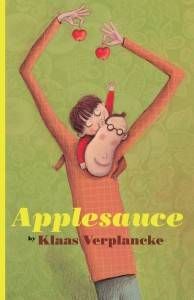
Parents are — unfortunately — people, too. Applesauce is written from the vantage of a young boy who’s alternately adoring and fearing his (seemingly) fickle father, who after all has moods and unappealing moments, as when “cactus grows out of his chin, and his breath smells like cauliflower.”
Admit it, sometimes we parents are gross. Fortunately, we can be redeemed, too.

When poet Jorge Luján asked children to tell him about their pets, he got replies from across Latin America.
The twelve poems included here were the result of this conversation.
4-7

Perhaps you didn’t know that absurdist playwright Eugene Ionesco wrote charming children’s stories, illustrated by Etienne Delessert. But what better use to put one’s absurdist storytelling tendencies than in crafting tales for children? Brought back into print by McSweeney’s with Delessert’s amazing, absurdist art.

There is a movement of Iranian children’s-book artists that is among the field’s most lush and accomplished. Here, Tahmineh is minding the sheep, plays on her flute, and a bird sings along. As Tahmineh cannot capture the bird’s wildness, she weaves a picture of her bird into a chanteh. Magic ensues.

As Outside in World writes, this is a “traditional Tanzanian animal fable brought to life with gentle humour, memorable characters, and bold, richly coloured illustrations that add a real sense of place to the story.”
True Friends won the Bologna Ragazzi New Horizons Award in 2005.

In 1974, this book won the Hans Christian Andersen Award; it has recently been re-issued by Tiny Owl in a new English edition.
A political allegory and coming-of-age. As Tiny Owl writes: “While his fellow fish are too scared to do anything different from their set routine, Little Black Fish swims over the edge of the pool, into the stream and river which will show him much more of the world. He meets wonders and adventures, dangers and beauty. He makes it all the way to the sea, and finds his answers.”

Yes, The Rainbow Fish — a staple of kindergarten classrooms across the U.S. — is a translation! It’s a story of friendship and generosity that, as NorthSouth publisher Heather Lennon also points out, lends itself really well to crafts.

Featuring flaps, cutouts, and pull tabs, this engaging pop-up book covers Matisse’s entire artistic career, including his paintings, drawings, sculptures, and paper cutouts. The publisher suggests ages 2-7, but only if you’re sure your two and three-year-old won’t destroy this beautiful, delicate art book. You’ll want it for years to come.
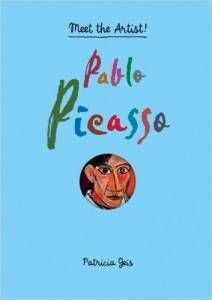
The Spanish Ministry of Culture declared this book in the series a “Best Edited Children’s Book.”
Charming art, charming story, and pull-outs that are endlessly interesting to children and adults.

A pictorial journey through the traditional countryside, farms, and towns of northern Europe takes readers past familiar storybook characters, visual jokes and puzzles, tricks of perspective, and other surprises.
Once you’ve been through this, you’ll want to go through all the Anno books, whether you have a child to read them with you or not.

The first of the Pettson and Findus books, nine story books have been published in Swedish, plus a puzzle book, song book and cookbook.
The books have worldwide book sales of over 6 million and have been translated into 44 languages.

Dragon’s Feathers is a retelling of an Austrian folk tale about a handsome, poor wood-cutter’s son who falls in love and wants to marry the beautiful daughter of the town’s moneyed tavern owner.
Wonderfully strange drawings from a Hieronymus Boschian fairy world.

Poor Mrs. Pepperpot — she shrinks! Well, apparently it’s not always a disadvantage.
One of Prøysen’s delightful short stories, written forty years ago, and collected into books, but now newly imagined on its own, with light, charming illustrations by Hilda Offen.

Eight-year-old Rami writes that: “The whole story started with a boy named Azizi in a orange tree. He heard a banging, and he went to it. He saw dad hanging up some pictures of the king and queen. His dad said he had to because ‘In the Land of the Crescent Moon, the walls have ears,’ which means that everybody listens to you. The king and queen are greedy, fat, selfish, and mean. They capture all the bluebirds in the country. Azizi rides a bird, carries jasmine flowers, and pierces the king and queen’s stomachs and frees the birds.”
Rami suggests, in his review, that, “Kids should read this because is it happy and sad. It is happy when the bird is out of the cage. It was sad when the people were being commanded by the king and queen.”
A story inspired by political change in Tunisia.

Led by a charismatic mouse with, among other things, wonderful scientific observations about the moon.
(“The moon is a giant ball of stone!”)

“These are dark times for a small mouse. A new invention—the mechanical mousetrap—has caused all the mice but one to flee to America, the land of the free. But with cats guarding the steamships, trans-Atlantic crossings are no longer safe. In the bleakest of places the one remaining mouse has a brilliant idea. He must learn to fly!”
Beautifully illustrated, charmingly told.
22) Moletown, by Torben Kuhlmann, translated by Andrew Rushton.
“The story of Moletown began many years ago” when a solitary mole arrived beneath a meadow.
Another of Kuhlmann’s beautifully illustrated, strange-familiar worlds, where a mole is caught between progress and preservation.

Guji-Guji begins with a strange egg rolling down a hill and landing in a duck’s nest. “Mother duck didn’t notice. She was reading.”
Mother brings up her “duck” and “crocoduck” just the same.
![PYB_LittleRedHood_Cover[1]websize(3)](https://s2982.pcdn.co/wp-content/uploads/2016/09/PYB_LittleRedHood_Cover1websize3-300x184.jpg.optimal.jpg)
A re-imagining of the Little Red Riding Hood story, shortlisted for the UKLA Children’s Book Awards for 2012. Little Red has no intention of being eaten and not much sympathy for the wonderfully fierce wolf, either.

A favorite among children’s book authors, it sings:
At the end of the village, behind a green door,
lived happy Miss Jolly, with Melvin, her boar.
“What makes her so happy? We really must learn!
“Cried her neighbours, Miss Whimper, Miss Grouch and Miss Stern.
“It’s awful being miserable day after day,
Let’s find out her secret! There must be a way!”
One ridiculously joyful lady, cauliflower hats, fish bonnets, a few very large animals, a pet boar called Melvin and a whole lot of watermelons.
Three miserable women discover the secret of happiness to be very pink and very messy.

Mouk takes future travelers around the world in this oversized book. As they go, his animal friends share a bit about each destination.
Comes with a vinyl sticker sheet.

“Hello Frog,” said Piglet. “You don’t look very well. What’s the matter with you?”
“I don’t know,” said Frog. “I feel like laughing and crying at the same time. And there’s something going thump-thump inside me, here.”
Brought into English by the brilliant translator of Asterix comix.

Baggage is the story of a woman and her luggage. Translated from a Russian poem originally published in 1926, with illustrations by the avant-garde artist Vladimir Lebedev (1891-1967).
“Last week a lady checked her baggage:
A suitcase, A hatbox,
A couch, A painting, a package, a pouch,
And last but not least, one cute little pooch.”

One morning, a huge and lonely elephant appears at the door with a letter hanging from his ear, saying: “My name is Dailan Kifki, and I beg you not to be alarmed at the fact that I’m an elephant…”
A surreal, strange, and funny adventure follows, complete, as the promotionaly text has it, with “fold-up forests, a grumpy dwarf, an unhelpful brother and a highly suspicious umbrella.”

As Rachel Ward writes: “It’s a sensitive and touching story of Bear, whose best friend the little bird has died. For a long time he is inconsolable, but eventually he ventures out and meets a wildcat who helps him to come to terms with his loss and face the future. Bear is able to remember the happy times he shared with the bird.
“I’ve borrowed a copy from the library, and it has come from the bereavement section. Now I’ve written about it, I’ll have to return it as soon as possible, just in case there’s anyone out there who needs it.”
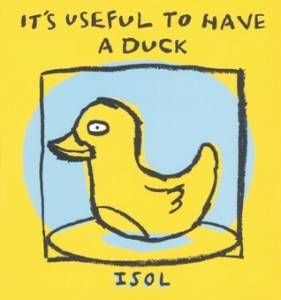
This book, by celebrated Argentinian author-illustrator Isol, can be read from front to back or back to front. Front-to-back tells the story of how it’s useful to have a duck from a boy’s point of view, while back-to-front relates the same events from a duck’s point of view. The duck indeed finds that it’s useful to have a boy.

Perhaps you and yours don’t love the avocado as much as my 5-year-old. Nonetheless, this poetic ode to guacamole from Mexico is a charm for any reader and eater. As the promotional material has it, “avocados are like green precious stones, salt falls like rain, cilantro looks like a little tree and the spoon that scoops the avocado from its skin is like a tractor.”

As Rachel Ward writes on her blog, this picture book — popular in France — “stars a ghost named Henry who invites his ghostly friends round to the castle for a dinner party. With each course, the guests turn the colour of the food or drink they’re consuming, until the final flourish – dessert so light it melts in the mouth, making Henry and his friends vanish altogether.”

As BookTrust has it: “Paris is beautifully rendered in moody beige, blue and orange in this retro-styled tale of French taxi driver Mr Leon and his multifarious taxi journeys around the city.”
Listed as a BookTrust “favourite.”

The Princess in the Kitchen Garden is a Batchelder honoree.
Hannah runs away after her mother’s death to an old kitchen garden and finds a princess, a hungry goat, and a wild windstorm.

Part of a popular series in which Lars, the titular little polar bear, has often been lost far from home. Each time, someone has helped him get back safely. Now, Lars must help a little tiger named Sasha who finds himself lost and alone at the North Pole.

This is a decades-old story from a Russian poet, newly interpreted by a contemporary American artist.
A jointly told folktale that begins with first, the narrator steps out, second, a friend joins him, third they pick up a tiny man, and so on.
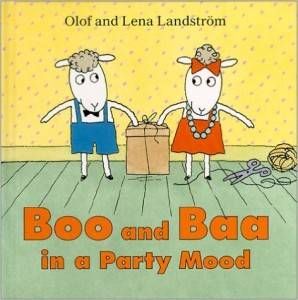
There are a number of Boo and Baa books — Boo and Baa in the Woods, Boo and Baa at Sea, Boo and Baa Get Wet — and always the wide-eyed lambs bumble into predicaments. Here, they’re getting ready for a birthday party at their friend Bob’s. Publisher’s Weekly has called them Scandinavia’s answer to Sandra Boynton, although I wasn’t aware that Sandra Boynton was a question.

This picture book serves as an introduction to baking, and children can follow Bruno and Felix step by step as they put together a cake. There’s also an easy-to-follow recipe at the end of the book to encourage children and their parents to follow in the footsteps of the birthday beaver, Bruno.

Once you’ve mastered baking, it’s time to follow Bruno the Beaver as he builds himself a toolbox. There are detailed illustrations of each tool Bruno uses, as well as an apparently accurate set of toolbox plans at the end of this book. Once you’ve mastered these, Bruno can teach you to do other things, too.
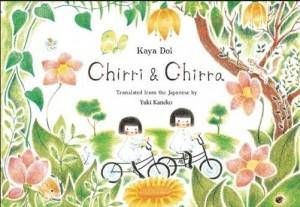
According to PictureBooksBlogger, sensory elements reign supreme, and the two girls ramble through the forest “sipping acorn coffee with the honeybees.”
And: “As this magical story unfolds further, we enter the stunningly muted world of Chirri & Chirra and see their utopian world through their eyes.”

Recommended by BookRiot’s Patricia Thang. Thang writes:
“Guri and Gura is a picture book series that began in 1967 and follows a pair of twin anthropomorphized mice. In the first book of the series, Guri and Gura find a giant egg in the forest and use it to make a cake. Similarly, other books in the series follow the pair as they go on various adventures and befriend other woodland creatures. The storylines are always very pure and sweet, and have little to no deeper meaning behind them.”

Also recommended by Thang:
“One Stormy Night was originally published in 1994 as a standalone book. However, after winning multiple awards and gaining massive popularity in Japan, Kimura decided to continue the story as a series. The seventh and final book was published in 2005. The story continues to be extremely popular (among children and adults alike), having been adapted multiple times to both stage and screen, including, most recently, a kabuki production in 2015. The series tells the story of a wolf, Gabu, and a goat, Mei, who meet one night inside a dark barn where they both happened to take shelter during a storm.”

A Batchelder shortlistee, Grandma tells the story of Xiao Le, whose grandmother dies. He comforts his mom by “reminding her that when it rains, Grandma is washing her clothes in the sky . . . and that although the Perfume Village in heaven cannot be reached by train, it can be accessed by the heart.”

Babak the little dung beetle finds an egg and is determined to find the owner. As a NYTimes review relates, it’s both sneaky and clever, intending first to make its readers laugh, but also slipping in a few facts as well.

Recommended by publisher Heather Lennon:
“‘We’ll have to move,’ says Mother, after realizing the pond is too small. But moving a family of 999 young frogs is fraught with danger! Hungry snakes are crawling through the grass. Hungry hawks are flying through the sky. A young frog makes a mighty tasty morsel.
Never underestimate the quick wits of 999 young frogs!”
8-10
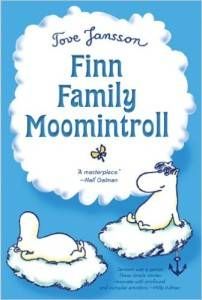
The whole Moomin empire is un-missable, but this is a good place to start. “It is spring in the valley and the Moomins are ready for adventure! Moomintroll and his friends Snufkin and Sniff find the Hobgoblin’s top hat, all shiny and new and just waiting to be taken home. They soon realize that his is no ordinary hat; it can turn anything―or anyone―into something else!”

An anthology of 16 short, unrhymed poems written 1000 years ago in China, during the Tang Dynasty.
These poems were traditionally memorized by children learning to read; now paired with dreamlike watercolors.

Asterix the Gaul is the first volume of the Asterix series, one of the great and silly joys of childhood reading.
Bell’s translations echo and amplify the wonderful wordplay of the original.

Chosen as one of the New York Times’ ten best books in the year of its original publication, this well-thumbed tome was a staple of my childhood, beloved absolutely, a gateway to other folktales and myths of the world.

It really needs no recommendation, but since we’re here, we might as well.
First published in 1943, The Little Prince is one of the most-translated books int he world — reaching more than 250 tongues — and one of the best-selling books ever published. It’s also been adapted to audio, radio plays, film, television, ballet, and the opera.

A USBBY Outstanding International Book, 2009.
Kiki lives with her mother, father, their fat old dog, Mona. But Kiki’s father, a doctor, is always going off to work in war zones. Eventually, Kiki’s father goes missing, and she feels it’s up to her to save him. A serious subject but not without its funny moments.

One of the beautiful things about the translation of Ellabbad’s The Illustrator’s Notebook — and Ellabbad was one of the most important Arab illustrators of his era. — is that it maintains the original Arabic and places tohe English translations at the margins.
A treasure for an illustrator of any age.

As you know, Pippi is an un-put-down-able nine-year-old girl who lives alone (with a monkey) in her wonderful wacky house, Villa Villekulla. Originally published in 1945, the Pippi books are popular around the world.
There are more Pippi books, of course, but this is where they begin.

Set among rough characters in 1920s Berlin, Emil’s adventure begins when he meets a mysterious man who introduces himself as Max Grundeis.
He teams up with detectives that he meets in Berlin, and life is never the same.

At once strange and realistic, The Cat Who Came in Off the Roof is about a reporter called Tibble who only ever writes about cats and is thus about to be fired from his paper.
Happily, he finds a woman who was a cat and has recently turned into a person.

The first thing to note about the Heidi series is that it spawned Heidiland, an important tourist destination in Switzerland.
Heidi, the girl of the Alps, loves the mountains, which are a magically healing place. More than a dozen film and TV adaptations have been made from the 1881 novel.

Recommended by translator Ruth Ahmedzai Kemp. According to the publisher: “Who does this footprint belong to? What is this worm up to? What is the name of this tree? Even if we live in the city, nature is still all around us: clouds and stars, trees and flowers, rocks and beaches, birds, reptiles or mammals. What are we waiting for? Let’s jump off the couch and begin exploring! Created in collaboration with a team of Portuguese experts, this book, which won the coveted Bologna Regazzi award, aims to arouse your curiosity about fauna, flora and other aspects of the natural world. It includes suggestions for activities and many illustrations to help the whole family get started, leave the house, and go out to discover – or simply admire – the amazing world that exists outdoors.”

Have a new reader who’s interested in architecture? Or are you interested in architecture? H.O.U.S.E. takes you through some of the world’s most surprising homes — while also introducing their owners and architects. “An illustrated treat that’s equally captivating for its quirky, cartoonish design as for the bizarre and wonderful architecture it illuminates, H.O.U.S.E. immediately stands out from other architecture books, appealing to curious minds, inspiration-seeking artists, and parents looking to creatively engage their children. An international award-winner from the famous polish design studio, Hipopotam, H.O.U.S.E. is a window into a more vibrant, surprising, and delightful world–one where the imagination can become as real as the place you call home.”

Gathered from oral sources and old collections written in Dutch and indigenous languages, these folktales are accompanied by fresh and vibrant images by Indonesian artist Hardiyono.

A collection of short stories from award-winning author Toon Tellegen, in Martin Cleaver’s also-award-winning translation, centered on a series of poetic letters written by animal protagonists.
Can they send mail to the sun? Can they write a letter to a letter?
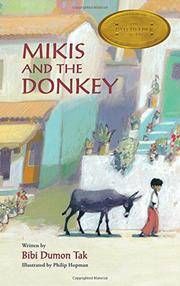
The relationship between a boy and a working donkey who live in a small town on a Greek island. As librarian Lisa Nabel notes, “There is no high adventure, fast-paced drama, or laugh-out-loud comedy, but readers who enjoy a gentle tale will appreciate the beauty of this quiet story.”
Especially for animal-lovers.
11-13

“Aunt Podi’s treasured Burmese box was a part of family history. When Panchu Mama narrates the hair-raising story of how it was acquired and the mysterious circumstances in which it got lost, Goopy decides to find the fabled box and its precious contents.” A fun, fast-paced detective novel by a beloved Bengali children’s-book author.

Yes, this classic book — made into a classic movie — was translated into English from the German (classic).
As you probably know, at the heart of this book-within-a-book is Bastian Balthazar Bux, who boosts a copy of The Neverending Story from an antiques store—and enters its pages. After that, Bastian must give the childlike empress a new name.

A New York Times Best Illustrated Book about Hélène, inexplicably ostracized by the girls who were once her friends. A beautiful graphic novel of the other children’s cruelties and the friendship of a fox.

The 2009 Batchelder Award winner, Moribito merges Japanese myth and the Western fantasy tradition in Balsa and Prince Chagum’s story as they face the egg-eating monster Rarunga and the prince’s father.

Winner of the 2009 Marsh Award, Toby Alone follows the titular Toby, “one and a half millimetres tall. He lives happily in an oak tree with his parents until his father, a controversial scientist, discovers how to turn tree sap into energy. Realising that this discovery could destroy their world, he refuses to reveal his secret.The family are exiled and later imprisoned – but Toby escapes and is pursued as he tries to find friends to help his family.”

The sequel to Toby Alone, in which “Toby must find a way to rescue his parents from the hands of the loathsome tyrant, Joe Mitch. His old friend, Leo Blue, now his worst enemy, is hunting him down and has kidnapped and imprisoned the lovely Elisha. Meanwhile, slave labourers are forced to dig a crater deep into the Tree, doing unimaginable damage to the world of all the Tree people.”

The three Inkheart books are: Inkheart (2003), Inkspell (2005), and Inkdeath (2008). The series follows the adventures of Meggie Folchart. Both she and her father, a bookbinder named Mo, can bring characters from books into the real world when reading aloud.

Bestselling Norwegian mystery author has books for the younger set, too: These are less mystery and more scatalogical silliness, but just as popular with fifth graders as Nesbø’s mysteries are with adults.

This is a Dutch children’s classic, first published in the Netherlands in 1962, also popular among English readers. It’s a quest set in a fantasy medieval kingdom of Dagonaut, where the young squire Tiuri is interrupted — on the eve of becoming a knight — by a plea for help.
A traditional children’s fantasy novel in the best sense.

A beautiful children’s graphic novel about the Lebanese civil war — and what it was like to be a child during that war. Abirached’s acount of her own childhood, it’s told and illustrated with great feeling. As the NYT review notes, its strengths are myriad. A window on conflict for young readers.
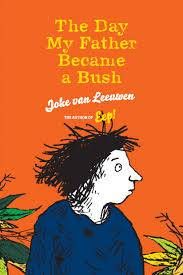
A story of wartime Europe, which Playing by the Book calls “a tender and yet funny and unsentimental story about a refugee child forced to leave her home country because of war,” yet full of humor, too.
From the publisher: “Toda’s father has gone away to fight in the war. Luckily, he’s read about camouflage and will be able to hide from the enemy by disguising himself as a bush. Toda is sent to stay with her mother where it’ll be safer. Her journey across the border is full of danger and adventure, but she doesn’t give up.”

Also recommended by Playing by the Book, and winner of the 2014 Batchelder award, this novel weaves together the lives of Linus in NYC during WWII and the final years of Dutch artist Piet Mondrian, also in NYC.

Based on the author’s memories and writings, this diary-style memoir recounts Wassiljewa’s experiences from 1941-1949.
According to School Library Journal: “Wassiljewa was barely 14 and living close to starvation in a small, German-occupied town 60 kilometers from Leningrad when she was sent to do forced labor in Germany. Her story is gripping and a grim reminder of the horrors war imposes on civilian populations.”

Chilean writer Poli Délano was born in 1936, when his family was living in Madrid. There, they become friends with the poet Pablo Neruda and his wife Delia del Carril.
This memoir is set in the 1940s, when Poli got to know Pablo. From the review in Outside in World: ” Perhaps the most touching story is that of Poli wanting to buy a fountain pen and a watch and in order to find the money he decided to sell chewing gum at the cinema and clean cars in the car park. When the poor children saw him taking over their job, they violently sent him away. Poli was very angry and frustrated by the incident but his parents and Tio (uncle) Neruda calmly explained that those children needed the job to eat while his motives where purely superficial.”

Begin with book one in this acclaimed children’s fantasy series from the Danish, in which 12-year-old Clara can communicate with — and control — the natural world.
But before Clara can come to grips with her abilities, she meets with a powerful enemy.

Winner of the 2014 Marsh Award for Children’s Literature, The Adventures of Shola follows the titular Shola, “a little dog with attitude.” Shola loves both comfort and adventure — well, at least the idea of it.
Atxaga translated the four stories in this collection from Basque to Spanish, after which the celebrated Jull Costa brought them into English.

More adventures from Shola. Here, she is convinced that she is not a dog, but a lioness. As the publisher writes: “To the bemusement of her long-suffering owner, Señor Grogó, she sets off to prove her heroic status to the world (and to herself).
“If only those pesky ducks, nonchalant cats and tempting snacks weren’t there to stand in her way…”

A gripping read for children (and any of us) just coming to understand the evils humans do to each other.
From the publisher: “Alice is eleven years old, and it is wartime. She is on a train with no seats, no lights, no sanitary facilities. Her parents and her grandmother are missing, and Alice doesn’t know where she is going. Maybe she will get to play outside again, maybe she will see her parents. But as the train rolls on, Alice begins to realize that just when you think things can’t possibly get any worse, they do.”
81) Sophie’s World, by Jostein Gaarder, translated by Paulette Moller.
This novel follows 14-year-old Sophie as she finds a letter that leads her to a mysterious mentor who helps her explore Western philosophy and philosophical questions.
Sophie’s questions begin with “Who are you?” and “Where does the world come from?” and go on from there.

Recommended by Rachel Ward: “It is set in a post-apocalyptic world where nobody is allowed to own the land, but it is passed down from mother to daughter. Women are the rulers with a duty to care for the land, and men lead an itinerant life.
“The main character is 12-year-old Kat, daughter of Tess, the maestra of Crowfoot Inn.”
Ward says that “the writing is truly fantastic, in every sense of the word.
14-17

A beautiful novel that follows a young girl who is sent, by her father, to work as a live-in maid with a family in Beirut. Illuminating the life of a child who rarely makes it into fiction — and Faten (the book was Faten in the Arabic) is also charming and full of spirit, with ideas on how to make the world better for herself and others.
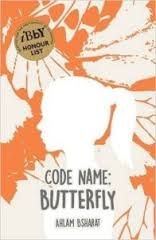
Shortlisted for the 2013 Etisalat Prize for Arabic Children’s Literature, Code Name: Butterfly is something of a Sophie’s World for Palestinian teens.
“Butterfly” is a teen struggling to grow up in a Palestinian village dogged by deaths, arrests and demolitions. The book opens as her father comes home from work, exhausted and snappish, and she doesn’t know what to think about him. Butterfly’s father is no hero: he works on farms owned by Israeli settlers. Is her father wrong to enjoy this work? Is she wrong to eat the chocolates given by his bosses? Read a longer review on The National.

A Batchelder Award winner, Brave Story follows the tale of a boy whose father has abandoned him and whose mother has been hospitalized after a suicide attempt. He searches for some way to change his life and finds the magical world of Vision.
Originally serialized in Japanese newspapers.

The very popular YA trilogy by the author of Inkheart begins here, with Jacob Reckless: “Ever since Jacob Reckless was a child, he has been escaping to a hidden world through a portal in his father’s abandoned study. Over the years, he has made a name for himself as a finder of enchanted items and buried secrets. He’s also made many enemies and allies–most important, Fox, a beautiful shape-shifting vixen whom Jacob cares for more than he lets on.”

Persepolis — A New York Times Notable Book and Time Magazine “Best Comix of the Year” — is a great graphic novel for any reader. It’s particularly rich for those readers 14+ who can feel the nuances of Satrapi’s tale of her life in Tehran from ages six to fourteen without taking it as a “single story.”

It’s hard to put an age on The Watcher in the Shadows.
From Zafón: “When I wrote these books I was aiming to write the kind of novel I would have liked to read when I was twelve or thirteen years old. I was trying to offer a nod to all the books kids of my generation used to read, from the mysteries of Enid Blyton to the great nineteenth-century classic stories of intrigue and adventure from Dumas to Verne to Stevenson and beyond. I was also secretly hoping that adult readers would enjoy them as well, and that the novels would transport them back to those first books that capture a reader’s imagination and fire a love for literature.”
You can also read an excerpt at Tor.

“Gwyneth Shepherd’s sophisticated, beautiful cousin Charlotte has been prepared her entire life for traveling through time. But unexpectedly, it is Gwyneth, who in the middle of class takes a sudden spin to a different era!
“Gwyneth must now unearth the mystery of why her mother would lie about her birth date to ward off suspicion about her ability, brush up on her history, and work with Gideon–the time traveler from a similarly gifted family that passes the gene through its male line, and whose presence becomes, in time, less insufferable and more essential. Together, Gwyneth and Gideon journey through time to discover who, in the 18th century and in contemporary London, they can trust.”

Winner of the 2008 Prix de Libraries in France.
No and Me is an examination of homelessness and empathy in which a Parisian teen named Lou meets No, a teen living on the streets.

For lovers of mystery stories, these pit Leblanc’s Arsene Lupin against Sir Arthur Conan Doyle’s Sherlock Holmes.
The two stories — “The Blonde Lady” and “The Jewish Lamp” — were initially published in the magazine Je sais tout from November 1906.
As noted at Outside In World, “In the introduction by the translator David Carter, who has created a wonderfully flowing translation that has lost none of Leblanc’s wit, he explains that after legal objections from Conan Doyle, the name was changed from Sherlock Holmes to ‘Herlock Sholmes and Watson became Wilson.”

This popular YA novel — book one of a series — is set in Venice, where magic is a banality. “Merle is apprenticed to a magic mirror maker, and Serafin — a boy who was once a master thief — works for a weaver of magic cloth. Merle and Serafin are used to the mermaids who live in the canals of the city — beautiful creatures with hideous mouths that split their faces from ear to ear — and to the guards who patrol the streets on living stone lions.”

Published when Guène was just nineteen, it’s the story of Algerian-French teens in Paris by an Algerian-French teen.
In this French best-seller, 15-year-old Doria and her illiterate mother, having been abandoned by Doria’s alcoholic father, are stuck in a Paris housing project called the Paradise.

This book — which won the International Prize for Arabic Fiction — isn’t listed as YA, but it is about a teenager’s identity struggles, written in straightforward Arabic (and translated into straightforward English by Jonathan Wright).
Josephine Mendoza travels to Kuwait from the Philippines to work as a maid. There, she meets Rashid, an only son of a domineering mother. The story is narrated by the son they have together, Isa/Jose, and his struggle to fit in, either in Kuwait or the Philippines.

Dragon Sword and Wind Child is the first book by award-winning fantasy writer Noriko Ogiwara. Part of the Jade Trilogy, Dragon Sword follows young Saya, who was adopted by an elderly couple who found her in the forest when she was an infant.
Raised to worship the God of Light, she catches the eye of Prince Tsukishiro and the People of Darkness, those who do not fear death.

This winner of the Bactchelder is set during WWII. “At the start of World War II, ten-year-old Franziska Mangold is torn from her family when she boards the kindertransport in Berlin, the train that secretly took nearly 10,000 children out of Nazi territory to safety in England. Taken in by strangers who soon become more like family than her real parents, Frances (as she is now known) courageously pieces together a new life for herself because she doesn’t know when or if she’ll see her true family again.”

“I don’t wanna be famous
I don’t wanna be who you are
I don’t wanna be a trademark
I don’t wanna be a wannabe superstar
I wanna be infamous,
Incapable,
unfaceable,
untraceable…”
Mira M. leves Croatia at age nine hidden in the back of her uncle Lou’s van. A road-trip book about counter-culture, borders, and music.

Based on the story of Enaiatollah Akbari, who worked with the author, this book won the 2013 Marsh Award: “When ten-year-old Enaiatollah Akbari’s small village in Afghanistan falls prey to Taliban rule in early 2000, his mother shepherds the boy across the border into Pakistan but has to leave him there all alone to fend for himself. Thus begins Enaiat’s remarkable and often punishing five-year ordeal, which takes him through Iran, Turkey, and Greece before he seeks political asylum in Italy at the age of fifteen.”

Winner of the Governor General’s Award for both text and illustration, Harvey follows the titular Harvey, who is obssessed with The Incredible Shrinking Man.
When relatives perss him to look at his father in his coffin, Harvey begins to disappear.

Not specifically YA, but certainly interesting to the contemplative or artistic teen.
The Japanese manga artist Yuichi Yokoyama’s gives a wordless journey: a train ride that becomes a meditation on the vehicle’s architecture and passengers. From Bookforum: “Concerned with phenomena rather than character and narrative, his comics resemble the output of a drafting machine: sequences that present multiple views of an object in action and look like exploded product diagrams. Yokoyama seems to enjoy the resulting images as much for the strange shapes that are generated as for what they reveal.”
Thanks for inspiration to Crossover Picturebooks: A Genre for All Ages, by Sandra L. Beckett; to The Oxford Guide to Literature in English Translation, by Peter France; to Rachel Ward’s blog, A Discount Ticket to Everywhere; to The Reading Agency (UK) and Outside in World (UK); to “Best Children’s Picture Books from Abroad,” by Maureen White; to “YA Literature in Translation: A Batch of Batchelder Honorees,” by Kristana Miskin; to the Ya Ya Yas; to Ruth Ahmedzai Kemp, and to many other translator-author friends.
Note: If you make a suggestion below, please #namethetranslator!












